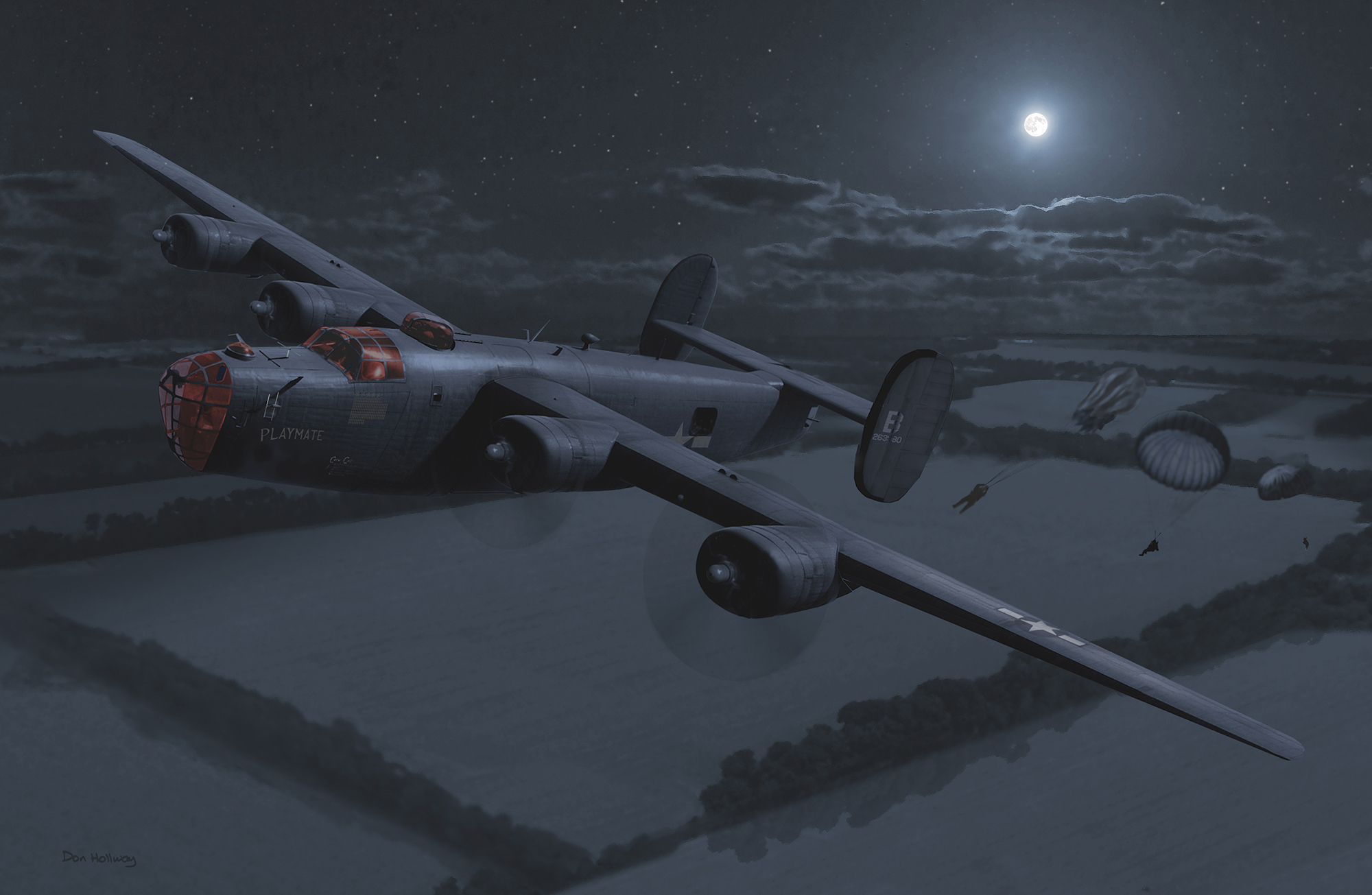In May 1944, not long after their arrival in England, B-24 Liberator pilot Captain George Johnson and crews of the 788th Bombardment Squadron (Heavy) were told they could forget their training in high-altitude strategic bombing. Lieutenant Colonel Robert W. Fish briefed them: “You are going to learn to fly your airplane 400 feet above the ground—10 miles per hour above stalling. And in addition you’re going to do this at night and you’re going to do it as a single ship mission. I’m going to give you five minutes to think about it. Now, if you don’t want to be a part of this all you have to do is to get up and walk out. You’ll go back to your group and nothing will be said and it won’t reflect against your record.”
Low, slow and alone, over enemy territory, at night? “I could sense that my crew wasn’t too fond of the idea,” remembered Johnson, “and you could sense that the others felt pretty much the same way but I suppose this was one of those times when the word ‘chicken’ comes into play.” Nobody rose to leave, and Fish drew aside a curtain revealing a map of occupied Europe, marked with red circles.
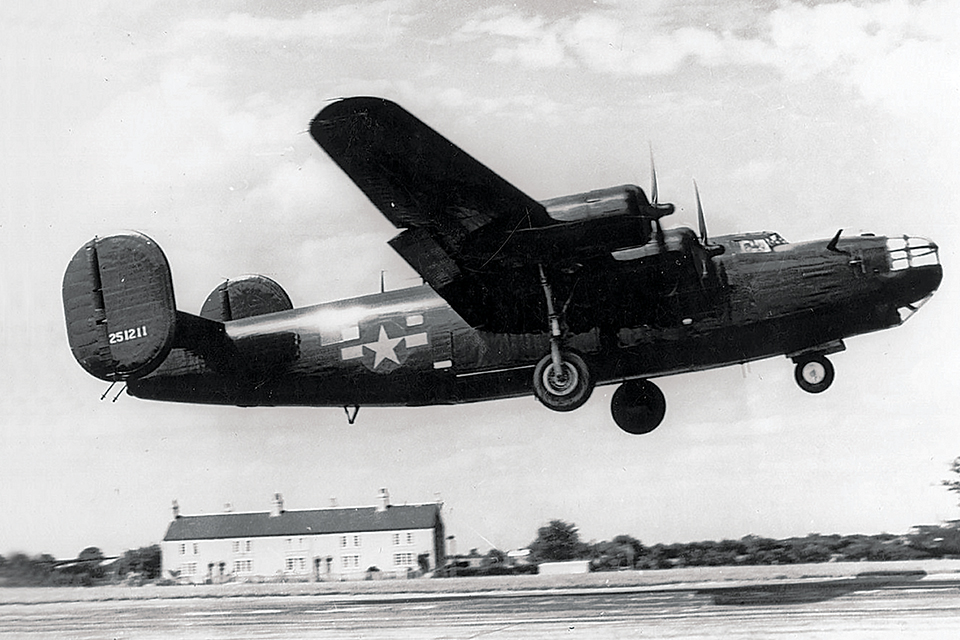
“Now, these are the locations of the underground groups, the Maquis, the French Force of the Interior, the partisans,” he told them. “These are the people you are going to be working with. You’ll be going in at night—by yourself—delivering supplies to the underground and you’ll be dropping agents.”
Fish himself had little experience with daylight bombing. Up to a few months earlier he’d hunted U-boats in the Bay of Biscay as part of the U.S. Army Air Forces’ 22nd Anti-Submarine Squadron. But with the U.S. Navy now flying its own Liberator subhunters, the 22nd needed a new line of work. In October 1943, at RAF Bovingdon west of London, Fish and his commanding officer Colonel Clifford Heflin had met with officers of the Royal Air Force, U.S. VIII Air Force Bomber Command and Office of Strategic Services (predecessor of the Central Intelligence Agency). Under the codename “Operation Carpetbagger,” their B-24s would effectively become the air arm of the OSS.
Heflin, appointed CO of the new 801st Bomb Group (Provisional), knew finding and hitting a point target on instruments alone called for special skills. “This work is harder than bombing—trickier,” he noted. “You’re not following a formation—you’re on your own. It takes a lot of training and flying ability to hit a drop zone right on the nose. The best pilots for the job are those who have been on anti-submarine patrol.”
Since February 1942 the British had been dropping supplies in 19 countries from the Arctic to Africa. They trained American aircrews and agents in low-altitude night navigation and parachute drops no higher than 600 feet. The 22nd’s Liberators were painted black and converted for clandestine work. Though they also flew Douglas C-47s and A-26 Invaders, Boeing B-17s and British de Havilland Mosquitos, their workhorse remained the Consolidated B-24D. Its efficient, high-aspect-ratio Davis wing gave the bomber long range, heavy payload and high speed, but also made it difficult to handle at low speed.
Supply containers, with parachutes, were loaded and dropped just like bombs. Since they used British suspension lugs, the Liberators’ bomb shackles were replaced with British shackles. Cylindrical, one-piece “C containers,” 5½ feet long and 1¼ feet in diameter, held about 220 pounds each of small arms, bazookas, mortar tubes, jerrycans of gasoline and even bicycles (with French trademarks). Similar-size “H containers,” divided into five cells more easily hidden in the field, carried ammunition, grenades and sabotage equipment. Panniers holding 100 pounds each of soft goods—boxes and baskets of clothing, food, medical supplies and field dressings, radio sets and eventually thousands of carrier pigeons—were loaded in the fuselage. An on-base sewing factory labored around the clock to turn out enough silk parachutes and harnesses for everything.
In spring 1944, with the invasion of France on the horizon, Carpetbagger operations ramped up. Doubling their strength by absorbing the 788th and 850th bomb squadrons, they settled in at RAF Harrington, in Northamptonshire—the most westerly Eighth Air Force station and the highest above sea level. On average, 40 to 50 Liberators took off each night.
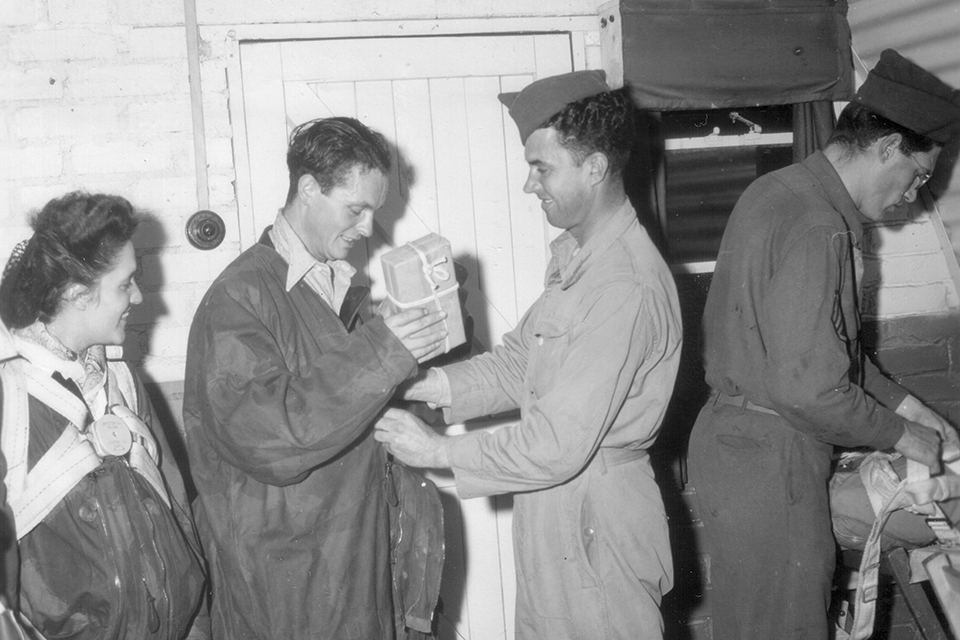
Secrecy, as might be expected, went well beyond normal bomber-base standards. Base administration and ground crew personnel were told that the black-painted aircraft were for night pathfinding missions. The OSS dictated drop zones, agents and cargos. Packers had no idea where the load was to be dropped, loaders had no idea what had been packed and even the flight crews were left literally in the dark. “The only ones that knew where we were going were the pilot and the navigator,” remembered top-turret gunner Sergeant Bill Becker. “When we got in the air, it was radio silence….We didn’t know what the mission was….I never knew the agents that we might be dropping. They got on at the last minute.”
Known anonymously only as “Joes” (females as “Janes” or “Josephines”), agents arrived at the airfield a few hours prior to their drop. Security officers sanitized their disguises, removing any trace of England, from pocket change and shop receipts to American tobacco, and gave them forged identity papers. They boarded through the “Joe hole,” where the Liberator’s belly turret had been removed, and exited the same way. Three-man OSS “Jedburgh” teams (including Major William E. Colby, later the CIA director) trained and led Resistance groups against the Germans.
“We crossed the French coast at an altitude of 4,000 feet to get above the possible danger of machine gun fire from coastal defenses,” remembered Fish. “After crossing into France I immediately dropped down to between four and five hundred feet above the ground. This altitude was good for pilotage navigation by my bombardier. But more important it helped to keep a German night fighter from attacking us from below and from the rear….By our staying low we could force him to attack from above where we could bring the two top turret guns to bear on him as well as the tail turret guns.”
At first, drop zones were illuminated with secret flashlight signals. Later, ground forces used Eureka transmitters to signal the B-24s’ Rebecca (recognition of beacons) directional transponding radar. Leaflets—propaganda notices and, later, free passes for surrendering Germans—were often taken along, but released well before or after the actual drop to disguise its location.
Several Carpetbaggers took their support for the Resistance to the next level. On the night of April 27-28, B-24D serial no. 42-40997 Worry Bird (formerly Screamin’ Mimi of the 565th Bomb Squadron, 389th Bomb Group) clipped a hill at its drop zone near Saint-Cyr-de-Valorges, Loire, crashed and broke into four parts. Only radio operator Staff Sgt. James Heddleson and gunners Sergeants George Henderson and James C. Mooney survived. His back broken, Mooney was handed over to the Germans for care (and ultimately survived as a POW), but Heddleson and Henderson were taken in by the Maquis, lived with them for three months and even went along one night to help blow up a railway trestle. In early August an RAF Lockheed Hudson picked them up safely. (After the war the citizens of Saint-Cyr-de-Valorges not only erected a monument over the graves of Worry Bird’s crew, but made Heddleson an official member of the Resistance, an honorary French citizen and named the town square after him.) Another downed Carpetbagger, bombardier Lieutenant John Mead, actually joined the Resistance and fought on the ground through the D-Day campaign before meeting the advancing Allies, earning a promotion and a Silver Star.
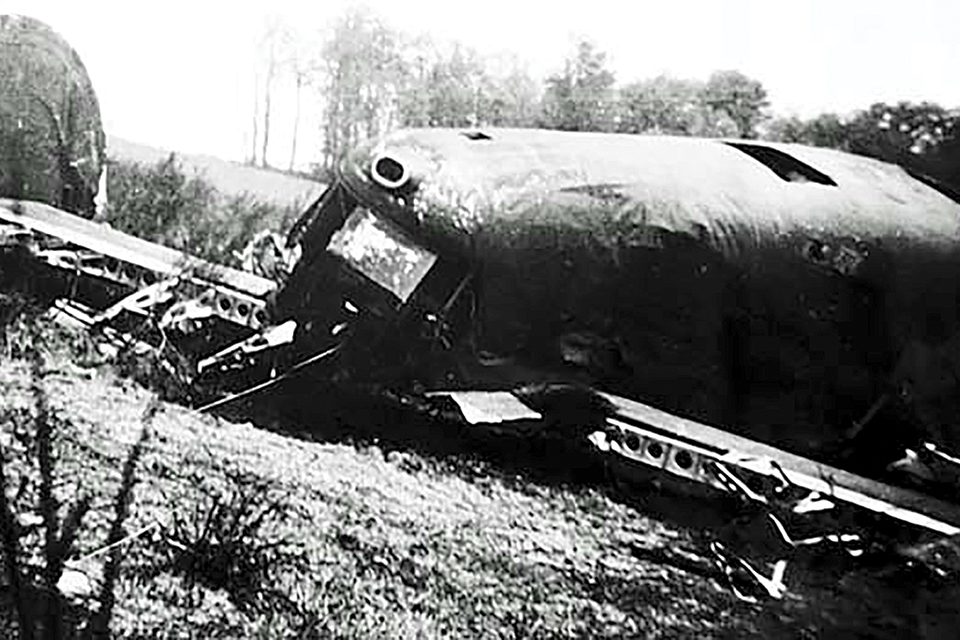
As cover, in August 1944 the Carpetbaggers assumed the designation of the disbanded 492nd Bombardment Group, a hard-luck outfit that had lost more than 50 aircraft in 89 days (and would be the only ETO group to be disbanded due to high casualties). The crews coordinated with British night bombing missions, flying ahead in high-altitude formations to divert German night fighters from the main RAF attack. In mid-September the priority became supplying Allied armies charging across France. Carpetbagger B-24s had their auxiliary wing tanks emptied of avgas and refilled with 80-octane. Two 400-gallon tanks were installed in the bomb bay, and nine 100-gallon P-51 belly tanks were carried as cargo. At 2,000 gallons per aircraft, in little more than a week the Carpetbaggers delivered in excess of 800,000 gallons to the front.
With France largely liberated, Carpetbagger missions trailed off, but by the end of the war in Europe the 801st/492nd had dropped some 4,500 tons of supplies and hundreds of personnel over enemy territory. Twenty-five Liberators were shot down and eight more so badly damaged they were scrapped. The inscription on the monument to the lost crew of Worry Bird in Saint-Cyr-de-Valorges translates to: “In memory of five American airmen found dead under the debris of their aircraft, shot down in flames at this place April 28, 1944, whose mission was the parachuting of arms to our secret army for the liberation of France and the restoration of our ideal.” It speaks to the service and sacrifices of all the Carpetbaggers.
Early aircraft painted black all over; later, black underneath, with the upper surfaces left olive-drab. Standard black matte applied to upper surfaces of aircraft arriving unpainted
• Removal of waist and cheek guns
• Blacked-out glass in the waist windows, cheeks and under the nose
• Flash suppressors on the top- and tail-turret machine guns, flame dampers on engine exhausts
• American bomb shackles removed and replaced with British conversion shackles
• Removal of ball turret in belly to create “Joe hole”
• Two strongpoints for parachute static lines installed at Joe hole
• Extraneous radio gear, armor and high-altitude oxygen system removed
• Red interior lighting to preserve night vision
• Blister in pilot’s side window for improved downward visibility
• Nose antennae for Rebecca airborne transceiver
• Toned-down side insignia, although tail codes remained bright
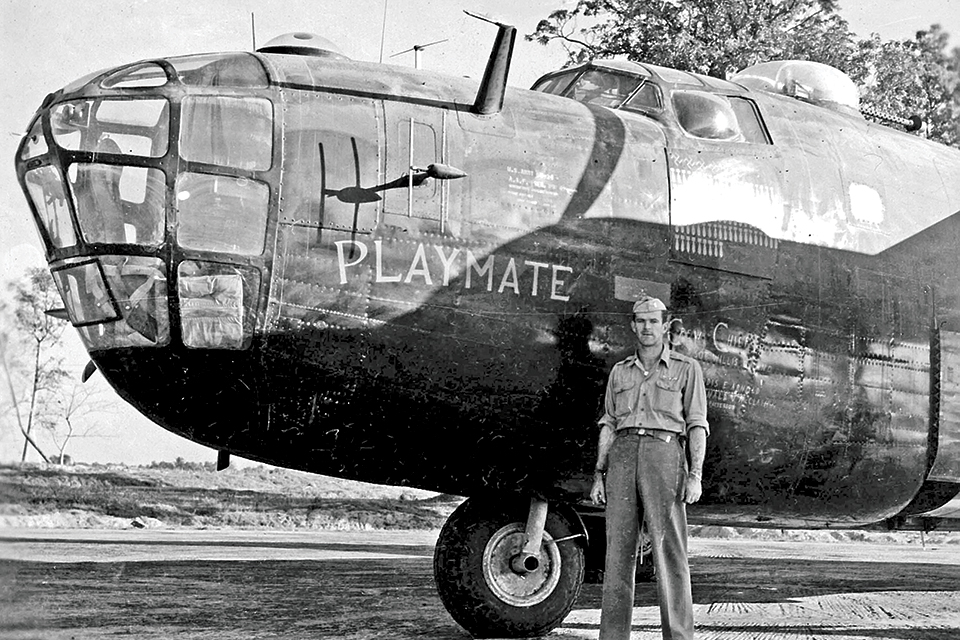
Consolidated B-24D serial no. 42-63980 Playmate, formerly Missouri Mauler, was one of the oldest Carpetbagger aircraft. In November 1944 Playmate flew from RAF Harrington to New Delhi, India, via Naples and Cairo, with 492nd Bomb Group and OSS personnel to investigate potential Carpetbagger operations in the China-Burma-India Theater. Though a Carpetbagger operation in the CBI was deemed necessary, it was decided to recruit units already in the East rather than bring an entire unit from the ETO. In January 1945 Playmate returned to England the way it came, a round trip of some 25,000 miles. In March 1945 two Carpetbagger Liberators and crews transferred to the Fourteenth Air Force at Kunming, China, to help establish Carpetbagger units.
For more information, frequent contributor Don Hollway recommends Carpetbaggers, by Ben Parnell, and the website 801492.org. Additional info, images and video at donhollway.com/carpetbaggers.
This feature originally appeared in the July 2019 issue of Aviation History. Subscribe here!

